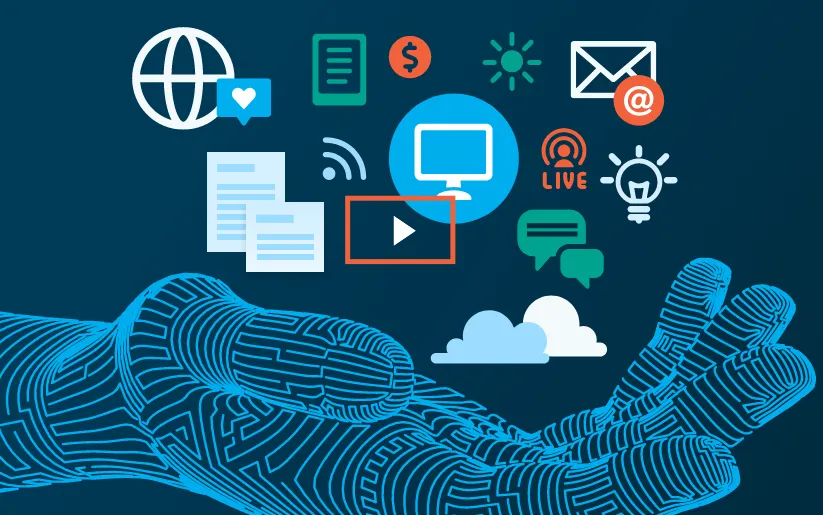The ability to adjust is what distinguishes successful companies from those that fail in a world where change is the only constant. With supply chain failures, pandemics, digital disruptions, and economic instability becoming the new normal, the past ten years have demonstrated just how unpredictable the global market can be.
It is imperative to future-proof your organization if you are serious about creating a long-lasting enterprise. However, what does it imply, and how can one begin? Let’s break it down.
What Is Future-Proofing?
Future-proofing your business means preparing it to remain resilient, relevant, and profitable no matter what the future holds. It’s about staying one step ahead of the curve and building the agility to pivot fast.
It doesn’t mean chasing every new trend or burning your budget on cutting-edge tech. It’s more about developing smart strategies and systems that allow you to weather uncertainty while continuing to grow.

1. Embrace Digital Transformation
Digital is more than just a catchphrase; it is the foundation of today’s corporate environment. Whether you run a brick-and-mortar shop or an online service, your ability to operate in the digital space is non-negotiable.
Start by:
- Building a strong online presence through SEO, social media, and e-commerce platforms.
- utilizing cloud computing to improve distant capabilities and collaboration.
- Using automation tools like CRMs, chatbots, and scheduling software to reduce manual work.
The more you digitize, the more resilient and scalable your operations become.
2. Diversify Your Revenue Streams
Relying on one income source is risky. If that stream dries up, your entire business could be at stake.
Instead, create multiple revenue sources. For example:
- If you sell physical products, consider offering digital add-ons or launching a subscription model.
- If you offer a service, create a course or eBook based on your expertise.
Having multiple income channels cushions you from shocks and opens up new growth opportunities.
3. Build an Agile Business Model
One of the best ways to future-proof your business is to make it adaptable. A rigid model is fragile. An agile one bends without breaking.
Here’s how:
- Regularly assess your SWOT (Strengths, Weaknesses, Opportunities, Threats).
- Stay open to pivoting when market conditions shift.
- Keep your operations lean so you can scale up or down quickly.
The faster you can respond to change, the better your chances of thriving in an unpredictable environment.
4. Stay Ahead of Industry Trends
Want to beat the competition? Spot trends before they do.
That means:
- Following industry blogs, podcasts, and thought leaders.
- Attending webinars, conferences, and trade shows.
- Listening to your customers and employees—they often notice changes before leadership does.
Proactive businesses lead; reactive ones fall behind.
5. Prioritize Customer Experience
Future-proof businesses put customers at the center of everything. Happy customers stick around. Unhappy ones disappear—fast.
Deliver a stellar experience by:
- Gathering real-time feedback through surveys and reviews.
- CRM software is used to monitor interactions and tailor communications.
- Offering omnichannel support—phone, chat, email, and social media.
Customer loyalty is your greatest defense against future disruption.
6. Upskill Your Team Constantly
Your team is either your biggest asset or your weakest link. Keep them relevant by investing in continuous learning.
Encourage employees to:
- Take courses on digital tools, data analysis, communication, and leadership.
- Attend industry events and webinars.
- Cross-train in multiple roles to increase flexibility.
A skilled, adaptable workforce can pivot with your business when the landscape shifts.
7. Make Sustainability a Priority
Sustainability isn’t just good for the planet—it’s good business. More consumers are choosing to support companies that care about the environment and ethics.
Ways to start:
- Reduce packaging waste or use eco-friendly materials.
- Offer digital receipts and paperless processes.
- Choose suppliers with ethical practices.
Green practices attract conscious consumers and build long-term brand trust.
8. Strengthen Supply Chain Flexibility
Supply chain breakdowns taught us a hard lesson in recent years: Don’t put all your eggs in one basket.
To future-proof your logistics:
- Build relationships with multiple suppliers in different regions.
- Keep some inventory local to avoid delays.
- Use supply chain software to track, analyze, and optimize every step.
Agility in your supply chain means fewer disruptions and faster recovery.
9. Manage Finances with a Safety Net
Future-proofing isn’t just about growth—it’s about protection. Keep your finances ready for any shock by:
- Maintaining a cash buffer for emergencies.
- Using tools like QuickBooks, Xero, or FreshBooks to monitor financial health.
- Constructing forecasting models using expected-case, worst-case, and best-case scenarios.
Financial preparedness gives you breathing room in a crisis.
10. Leverage Strategic Partnerships
Collaborations can strengthen, accelerate, and enhance the competitiveness of your business. Think beyond traditional vendors and explore:
- Co-branded products
- Affiliate partnerships
- Content collaborations with influencers or bloggers
Working with the right partners expands your reach and creates shared value.
11. Protect Your Business with the Right Tech & Security
Cyber threats are on the rise, and businesses of all sizes are increasingly targeted.
Protect your future by:
- Using multi-factor authentication and regular backups
- Training your staff on cyber hygiene
- Investing in reliable cybersecurity software
One breach can cost more than all your tech investments combined.
12. Foster a Culture of Innovation
Future-proofing isn’t just about reacting to change—it’s about driving it.
Encourage a culture where:
- New ideas are welcomed and tested
- Mistakes are seen as learning moments
- Teams are empowered to think differently
Innovation doesn’t come from the top down. It grows in a culture that nurtures curiosity and creativity.
Final Thoughts
Although you cannot foresee the future, you may plan for it. Future-proofing your business isn’t about doing everything at once. It’s about making consistent, strategic decisions that build long-term resilience.
Every action you take now, from embracing digital transformation to fortifying your supply chain, provides a foundation for a more robust tomorrow.
So ask yourself: Is your business built to last, or built to pass?
Now’s the time to make that decision.
FAQs
1. What’s the most important first step in future-proofing?
Start with a SWOT analysis to assess where you are and where you’re vulnerable.
2. Can small businesses afford digital transformation?
Absolutely. Many tools—like Canva, Trello, and Google Workspace—are free or affordable and offer huge productivity benefits.
3. How do I know if my business model is agile enough?
Can you pivot quickly? Can your team take on multiple roles? If not, it’s time to build in more flexibility.
4. Is customer experience really that crucial?
Yes! In competitive markets, loyalty and repeat business often come down to how valued customers feel.
5. How often should I review and update my business strategy?
Review it quarterly or at least twice a year, especially after major internal or external shifts.




